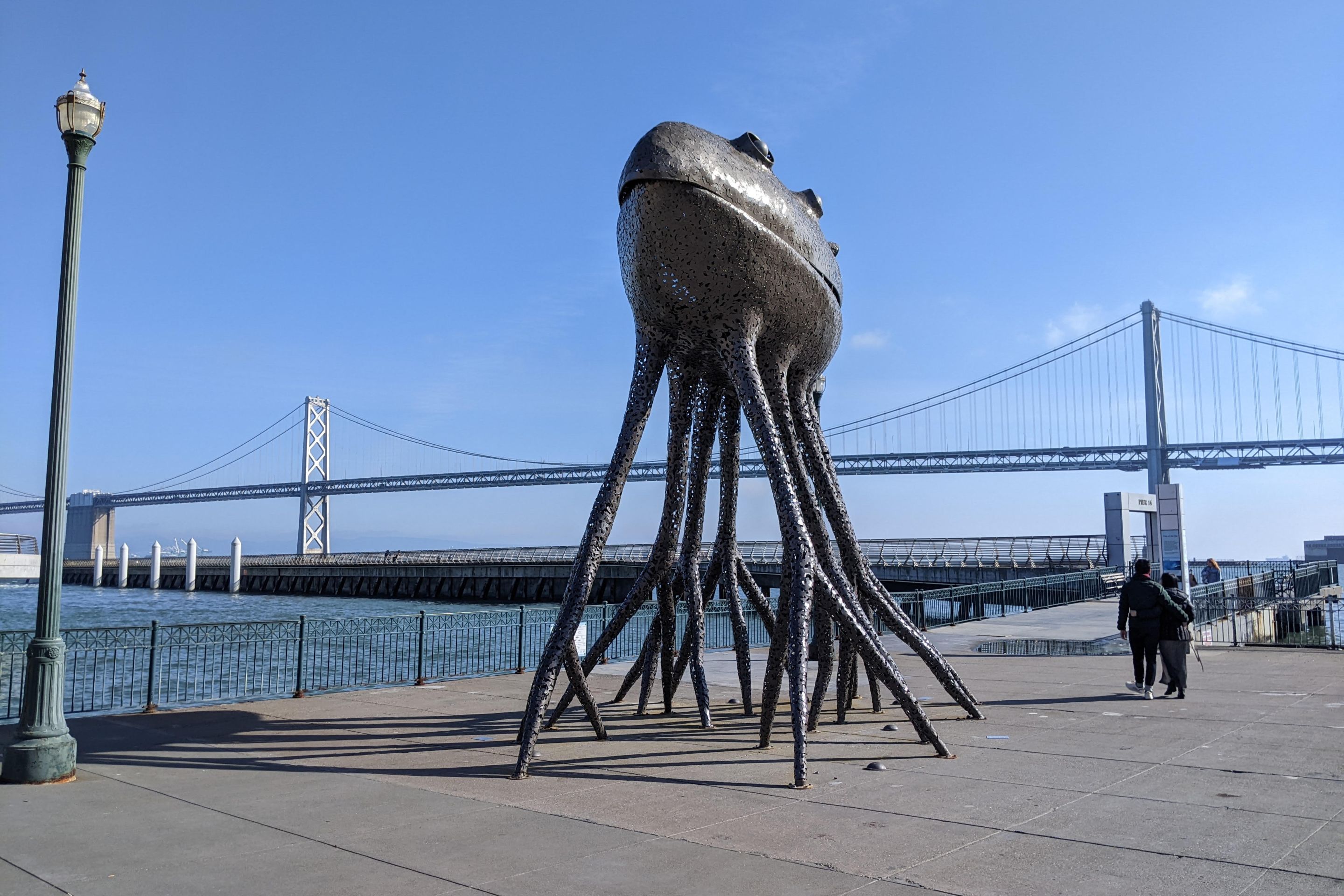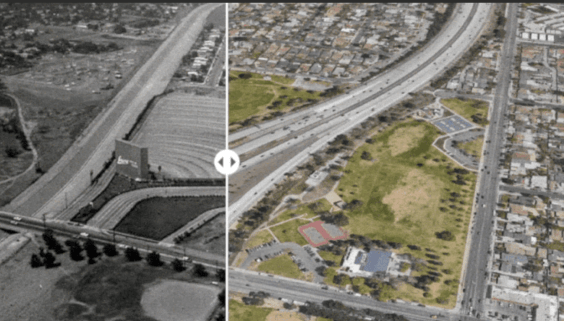Maybe you commute by train, or maybe you've switched from driving to biking. But your stuff is still traveling the country by diesel truck.
 Containers at the Port of Oakland. Photo: NOAA
Containers at the Port of Oakland. Photo: NOAANearly
a quarter of transportation-related greenhouse gas emissions come from
freight. The movement of goods from port of entry to a store near you
throws enough particulate pollution into the air to shorten the lives of
21,000 people each year, according to the Clean Air Task Force.
The freight sector is lumbering under inefficient and outdated systems
that cause pollution, public health problems, safety hazards, and
delivery delays. There’s never been a coordinated national approach to
solving these problems. And with no deliberate strategy, the default
approach is often to build more highways.
As Stephen Davis of Transportation for America writes:
If a port is congested or wants to expand, there’s little availablefederal money to spend directly on rail or any other mode. Your choicesare highways or highways. When a state or port does spend to improveoperations, there is no accountability to make sure they’re actuallyreducing port/freight congestion, moving freight faster, or reducingair pollution in surrounding communities.
Enter the FREIGHT Act. (That’s the Focusing Resources, Economic
Investment and Guidance to Help Transportation Act of 2010, with true
Capitol Hill acronym panache.) The FREIGHT Act was introduced in the Senate toward the end of July and in the House a week later.
The bill focuses on areas known as "connectors," said Kathryn Phillips
of the Environmental Defense Fund. “All the literature and studies say
it’s the connector areas, the hubs, where you have the most congestion
and environmental impacts.” The bill calls for troubleshooting at these
bottlenecks, where products are transferred “from boat to truck to
another truck to rail” and everything gets bogged down. Trucks get stuck
in traffic; trains sit on the tracks; ships idle at port.
Communities near international ports pay the price. In Riverside,
California, traffic gets tied up at 26 at-grade rail crossings 128 times
a day when trains pass. Add to that the noise and pollution nearby
neighborhoods must contend with.
“We don’t just want to pay for asthma filters for schools,” said Isaac
Kos-Read of the Port of Los Angeles. “We want to fix the emissions
problem from the ground up.”
Meanwhile, the bridges near the Port of LA are in alarming condition.
The Schuyler Heim Bridge is expected to fail in the next major
earthquake. The Gerald Desmond Bridge -- which carries 15-25 percent of
all cargo containers coming into country, according to Kos-Read -- wears
a “diaper” to catch chunks of falling concrete.
The Port of Oakland is struggling with antiquated rail lines over the
Sierra Nevada Mountains, said port spokesperson Matt Davis. “Some of the
tunnel clearances are not high enough to accept double-stacked
containers,” he said. State assistance to fix the problem didn’t come
through. Davis is convinced a national approach is needed to address
problems like these.
“We’ve seen previous projects of national and regional significance end
up in the earmark process, and what you get is some random highway in
Ohio,” said Davis. “It’s a hopscotch approach, not looking at it as one
coordinated freight corridor.”
Kos-Read agrees. He added that Canada is giving the U.S. an added
incentive to pull together to improve the freight sector -- or else
“Canada is going to eat our lunch.” Canada has articulated a
national freight plan -- and it's marketing itself to Asia as the
gateway to “North America’s economic heartland.”
The FREIGHT Act would mandate the creation of a National Freight
Transportation Strategic Plan, as well as a permanent Office of Freight
Planning and Development within the U.S. Department of Transportation.
It would also start a grant program to focus funds where they’re most
needed.
The legislation seeks not just to improve efficiency, but also to reduce
“air, water, and noise pollution and impacts on ecosystems and
communities.” It sets goals for improved outcomes, like improving travel
time reliability, cutting 40 percent of carbon emissions, and reducing
freight transportation-related fatalities by 10 percent.
How those outcomes are achieved will be up to the new office and the
strategic planners to figure out. It stands to reason that some trucking
will be replaced with rail, or short-sea shipping, but none of that is
prescribed in the bill.
Don’t expect this legislation to follow the normal process of
How-a-Bill-Becomes-a-Law. Its introduction in the House is, in part, a
product of the slow pace of the massive transportation re-authorization
bill, which seems to be proceeding on a glacial time scale. While it
stalls, lawmakers are picking off pieces of it to work on.
But Transportation Committee Chair Jim Oberstar (D-MN) is “not fond of
doing things piecemeal,” according to committee staffer Jim Berard. “He
feels the authorization bill should be a comprehensive approach to
surface transportation issues.” So the FREIGHT Act, in the House, is
likely to be folded into the larger transportation legislation, and not
passed as a stand-alone bill.
It works a little differently in the Senate. The Commerce Committee will
take up the FREIGHT Act, while the Environment and Public Works
Committee takes up the highways portion of the re-authorization, and
other committees bite off their pieces of the transportation pie. Those
various committee measures will then form the Senate’s transportation
proposal.
However it gets done, port operators, environmental justice advocates,
and supporters of transportation reform agree that it needs to get done.





